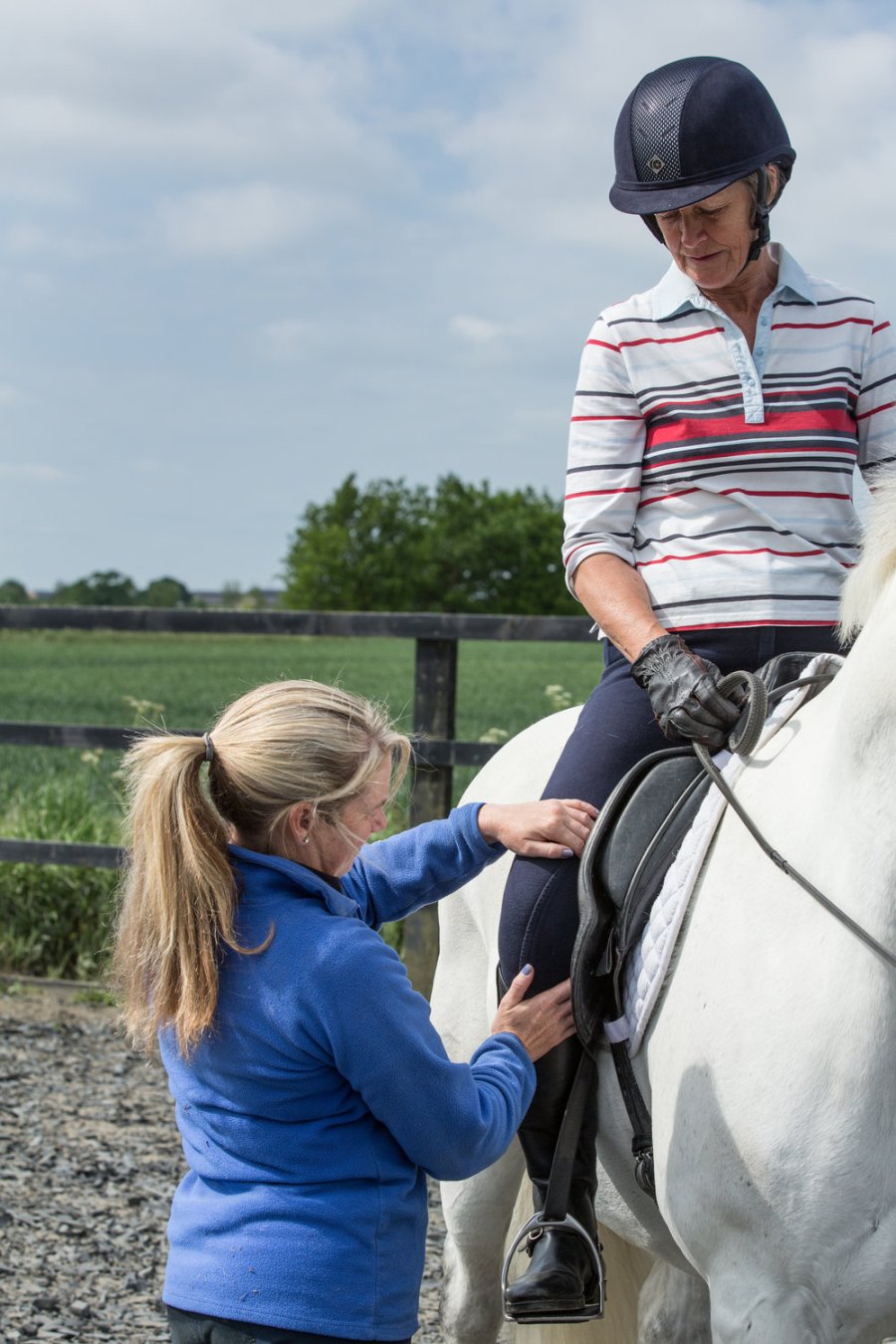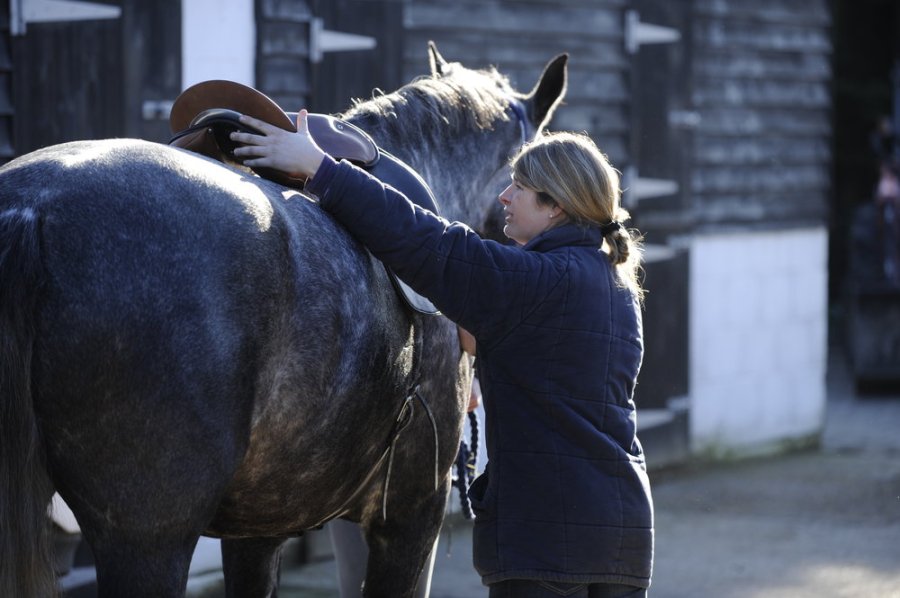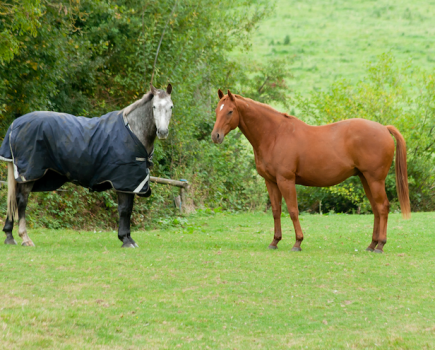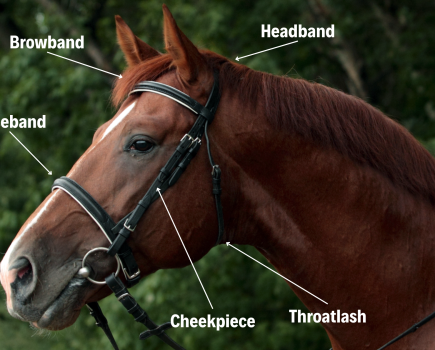Your saddle is likely to be the most expensive item of horse tack that you will buy, and its fit is one of the most important things you need to consider before getting on board.
When saddle fit is correct, it leaves both horse and rider feeling secure and confident, and enables your horse to work at their best while giving you confidence that they are comfortable.
A poorly balanced saddle can shift or sway, lacking the balance necessary for you to maintain an effective position, which in turn will affect the way your horse moves.
A well-fitting saddle should distribute pressure equally across your horse’s back, but also help you maintain the correct shoulder-hip-heel line, with your weight carried evenly through both seat bones.
Because your saddle has such a huge affect on both you as the rider and also on your horse, Your Horse recommends that you have the fit checked by a qualified saddle fitter at least once a year (ideally six monthly).
It should be more often if you notice any changes in its fit, your horse changes shape (for example after being out of work) or if there is a chance it may have been damaged.
How to fit a saddle (video)
In the following video, Diana Fisher, a Society of Master Saddlers registered saddle fitter, explains how to correctly fit a saddle:
What to expect at a saddle fitting
1 Understanding your requirements
When you first speak to your saddler they will ask you a series of questions. Be completely honest with your answers, especially if they are coming out to you, as there are only so many saddles they can fit in their van.
Questions will include what you do with your horse, their age, breed and fitness, and what your budget is. These questions help the fitter build a picture of you and your horse, and helps them decide which saddles may be most suitable for you to try.
When the saddle fitter arrives they’ll spend some time taking templates of your horse’s withers, back and spine using a flexicurve. They’ll also take your horse’s girth measurement.
Your saddle fitter will refer to these when they come back and check your saddle in the future. This gives your fitter valuable information about where your horse might have changed shape. The templates also help a fitter to decide what width of saddle will more than likely fit your horse.
2 Trying a new saddle
Then it’s time to try a few saddles. Your fitter will check to see that the saddle panels sit evenly along your horse’s back, whether there is adequate clearance at the wither and that it allows the shoulder to move freely. Once they’re happy with these first few checks it’s time to get you on board.
The saddle fitter will want to see you ride in walk, trot and canter on both reins. While you’re riding they’ll be making assessments on how the saddle is fitting now you are on the move.
Once you’ve ridden in all the saddles it’s time to give your feedback and generally discuss the feel and fit of each saddle.
When you’re completely happy it’s decision time. It may be a case of leaving a saddle with you there and then, or you may have to wait for your saddle to be made.
If you are buying second hand and nothing your fitter has in their van fits, they may be able to advise where to look for a suitable saddle and they can keep an eye out too.
When the right saddle is found, you can arrange for the saddle fitter to return and assess it for you.

How to check saddle fit
When you own a saddle, checking its fit is an ongoing process. Whether you’re buying a saddle for your horse for the first time, or you’ve owned your horse and their saddle for years, it will need regular checking by a professional saddle fitter.
They will look at aspects of saddle fit you may be unaware of, and will also be best placed to perform safety checks and identify and possible damage to the saddle.
In between visits from a saddle fitter, it is important to monitor saddle fit yourself. Master saddler Kay Hastilow suggests making the following checks:
> Clearance of the withers and spine
“Think about what we’re trying to achieve, which is clearance of the spinous processes in the horse’s back at all times, at all paces and with a rider on,” says Kay.
“If the clearance is never less than half an inch then that’s enough, but it must be right through the saddle, including under the cantle.”
> Balance of the saddle
“The saddle should balance evenly from front to back, so the rider will sit correctly without stirrups and without having to tip forwards to keep their balance,” explains Kay.
“The easiest way to check this is by asking someone to take a photo of you side on, at halt, walk and trot. Look to see if the saddle looks level. If it’s not, the rider will tip forwards in an effort to keep their balance.
“Don’t assume, though, that if they’re tipping forwards, the front of the saddle needs lifting. It’s just as likely to be the opposite.”
> Listen to your horse
“Take notice of what your horse is trying to tell you,” adds Kay. “If they start moving to the back of the box when you go in to tack up, this may indicate they’re worried about something.
“It might be the saddle, but it could also be that the bridle, bit or girth is uncomfortable, or they are hurting somewhere in their body.
“Horses will tell us if they have a problem, but you have to learn the language. If your horse doesn’t seem to be going as well as they could, or they’re downright naughty, take time to make sure the behaviour isn’t pain-related,” continues Kay.
“Observe, listen and give your horse the benefit of the doubt until you’re totally sure it’s just naughtiness, not them shouting ‘I’m hurting – please hear me’.”
Why saddle fit is so important
Prolonged riding in an out-of-balance saddle can have a serious welfare and performance impact on both you and your horse.
Any change in your horse’s shape or posture (good or bad) will influence the fit and balance of your saddle, and their condition, posture, and conformation varies depending on fitness and time of year.
It’s also important to note that these changes in condition and posture may happen in a very short space of time. Things like travel, competition and stress can all have an impact on your horse’s condition.
This highlights the importance of having regular saddle fitting checks at least two to three times a year — more can often be required.
Causes of poor saddle fit
Saddle fit can be affected by:
- Hoof balance: your saddle may become less stable towards the end of your horse’s shoeing cycle.
- Tight muscles through exercise.
- Veterinary issues, such as gastric ulcers or low grade lameness.
Any change in shape or posture of your horse will affect saddle stability, positioning and balance. You as the rider can also gain or lose weight, which affects your position and stability in the saddle.
All these changes can have a negative effect on both you and your horse with your saddle dropping at the front or rear, rolling side to side, or slipping to one side on one rein.
Signs you need to call a saddle fitter
Here’s our saddle balance checklist. If you feel any of these, it’s worth giving your saddle fitter a call:
- Your horse’s movement feels restricted.
- Their paces feel unlevel.
- There’s a lack of power in the horse’s paces.
- Their back muscles are sore.
- There’s a dip in their quality of work and/or competition performance.
- You have difficulty maintaining a correct riding position.
- You find giving the correct aids is difficult.
- You suffer from muscular pain in your lower back and shoulders.
- You have a feeling of being unstable and unbalanced in the saddle.
- Your lower leg position is too far forward or slip too far back.
- You have a tendency to tip forwards with your upper body or lean backwards.
Of course, saddle fit isn’t the only cause of the above problems, and this list isn’t exhaustive either. If you notice a change in your horse, checking their saddle fit is just one part of finding the cause of the problem.
You will need to work with your vet, equine dental technician, equine physiotherapist, farrier and/or nutritionist to help your horse return to full health.
Remember that buying a saddle is a big investment and making sure it fits you and your horse correctly is crucial for their welfare.
Horses can and do change shape regularly, so even if all seems fine to you, it is still well worth spending the money on regular checks from a qualified saddle fitter to keep you and your horse sound and comfortable for longer.
Things to consider about your saddlepad and girth
Whatever half-pad or saddlepad you choose to use, it’s important to discuss this with your saddle fitter, who can take it into account when your saddle is fitted or checked, so remember to have it with you.
Of course, it’s important that any pad you use under your saddle is a good fit; not too small, and it must not close in on the top or either side of the spinal processes.
Many horses seem to prefer half-pads, as these can often act as a shock absorber between you and them and reduce forces on the horse’s back.
According to a study by Dr Russell MacKechnie-Guire et al*, half pads were found to help buffer forces on a horse’s back generated by the rider in trot and canter.
However, in some cases a half-pad can destabilise your saddle and lift you away from your horse slightly. As we’ve already mentioned, all horses are individuals and it’s important to listen to them and make changes if necessary.
Girths offer more stability to the saddle when fitted without elastic. However, many horses who are girthy tend to prefer a girth that has a bit of give in it.
If this is your horse, a girth sleeve may help, or if you choose an elasticated girth ensure that the elastic is short and not too stretchy, otherwise the saddle could become unstable.
Anatomically-shaped girths work well with many horses, but again it’s important that the shape and size suits the conformation of your horse, in this case their ribcage. Your saddle fitter will be able to give you advice here if you’re uncertain.
How to find a saddle fitter
Whether you’re buying a new saddle or need a current one altering or its fit checking, members of the Society of Master Saddlers (SMS) are considered to be the best in the industry.
Search for your nearest SMS fitter and retailer here.
Main image © Your Horse Library/Kelsey Media








